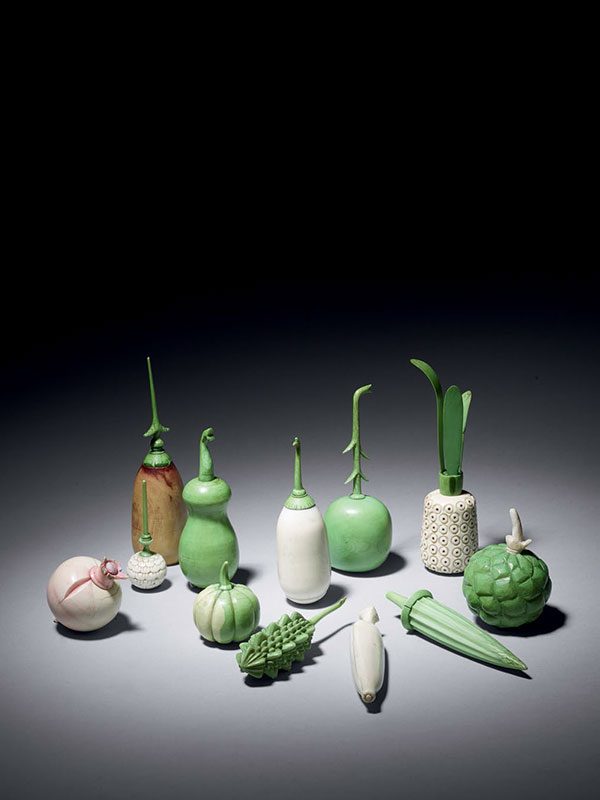Group of ivory scent bottles in the shape of vegetables and fruits
A group of 12 carved and stained ivory scent bottles. Each bottle is carved in the form of a vegetable or a fruit, including various forms of okra, aubergine and custard apple. The stalks form the stoppers. The ivory is stained in places to give the vegetables and fruits a more realistic appearance.
[No longer available]
Scent has always been expensive to produce and its luxurious nature is reflected in the beauty of the containers made to hold it. The earliest scent bottles came from Egypt and date from around 5000 BC. The use of scent (perfume, from the Latin perfumum ‘by smoke’) originated from incense, which was used as part of a religious ceremony. Apart from its ability to enhance the wearer’s attractiveness, perfume was also used for medicinal purposes. Ingredients for scent came from all over the world including India, where the mint-like herb patchouli is native. Until the 20th century it was common for the customer to have their own bottle into which the scent was decanted. [1]
- Walker, A. Scent Bottles, London 2002, p. 4

